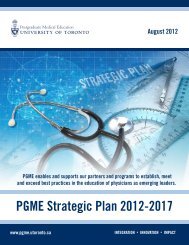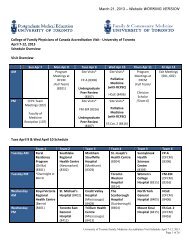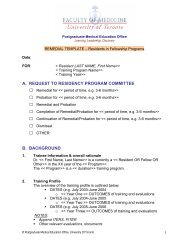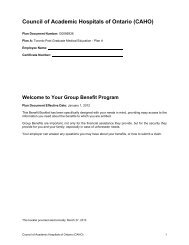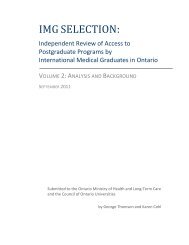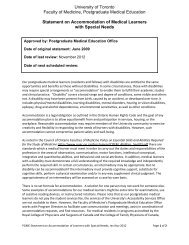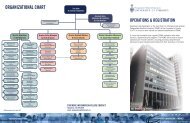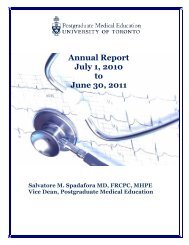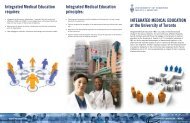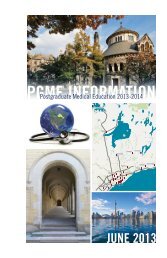Postgraduate Medical Education Information Booklet 2012-2013
Postgraduate Medical Education Information Booklet 2012-2013
Postgraduate Medical Education Information Booklet 2012-2013
Create successful ePaper yourself
Turn your PDF publications into a flip-book with our unique Google optimized e-Paper software.
University of Toronto Faculty of Medicine PGME <strong>2012</strong>-<strong>2013</strong><br />
i. are TB skin test positive and have never been evaluated for<br />
the positive skin test;<br />
ii. had a previous diagnosis of tuberculosis but have never<br />
received adequate treatment for TB; and/or<br />
iii. have pulmonary symptoms that may be due to TB.<br />
If the X-ray suggests pulmonary TB, the medical learner should be<br />
further evaluated including sputum smear and culture to rule out the<br />
possibility of active tuberculosis disease and documentation of the<br />
results of this evaluation should be in place before s/he is cleared for<br />
clinical placement. Once active tuberculosis has been ruled-out, strong<br />
consideration should be given to treatment of latent TB infection (LTBI).<br />
All TB positive medical learners should be advised to report any<br />
symptoms of pulmonary TB as soon as possible to the Health Services,<br />
and should be managed using current guidelines.<br />
Active cases of TB, those suspected of having active TB disease,<br />
tuberculin skin test converters and those with a positive TB skin test are<br />
reportable to the local <strong>Medical</strong> Officer of Health. Learners with active TB<br />
or suspected of having active TB should be reported as soon as possible<br />
to the <strong>Medical</strong> Officer of Health. Occupationally acquired active TB and<br />
LTBI are also reportable to Workplace Safety and Insurance Board<br />
(WSIB) and the Ontario Ministry of Labour.<br />
Annual screening for TB may be necessary in health care settings with a<br />
high incidence of active TB disease. Health Services should consult the<br />
local <strong>Medical</strong> Officer of Health and local hospitals regarding the incidence<br />
of active TB disease in the region and the need for continuing TB<br />
surveillance of medical learners. A review of admissions through health<br />
records will determine if the setting is a high risk facility, as defined by<br />
Public Health Agency of Canada, i.e. ≥ 6 cases of active TB disease per<br />
year, requiring active surveillance. Learners who are placed in high risk<br />
units or areas must report to Health Services for follow-up assessment 8<br />
weeks after completing the placement or elective.<br />
Varicella/Zoster:<br />
<strong>Medical</strong> learners must demonstrate evidence of immunity. <strong>Medical</strong><br />
learners can be considered immune to varicella/zoster if they have:<br />
a definite history of chickenpox or zoster, OR<br />
VZV antibodies, using a sensitive/specific serological test such as<br />
immunofluorescent antibody (IFA), Latex agglutination (LA) or the<br />
ELISAIgG, OR<br />
64



